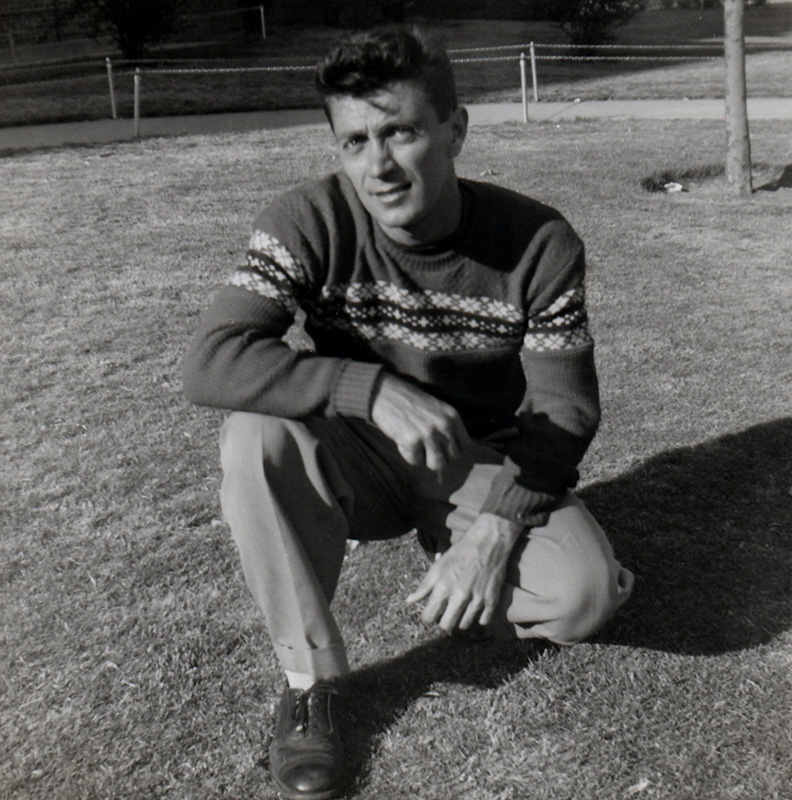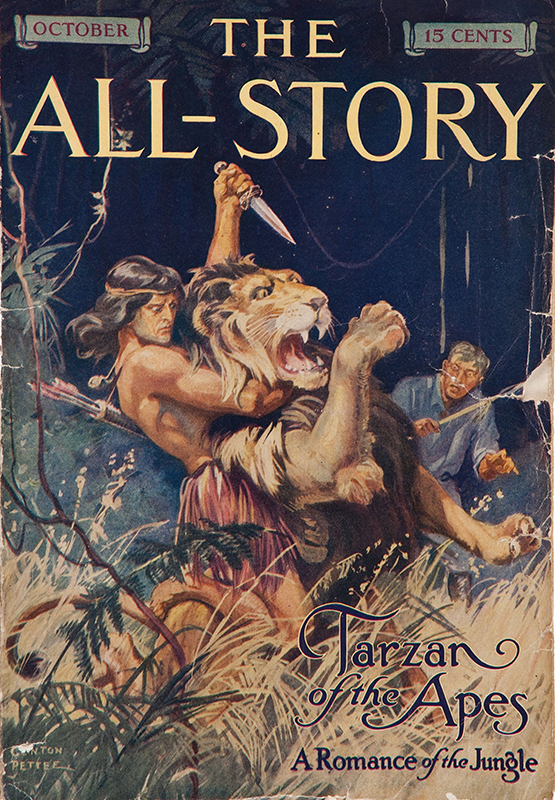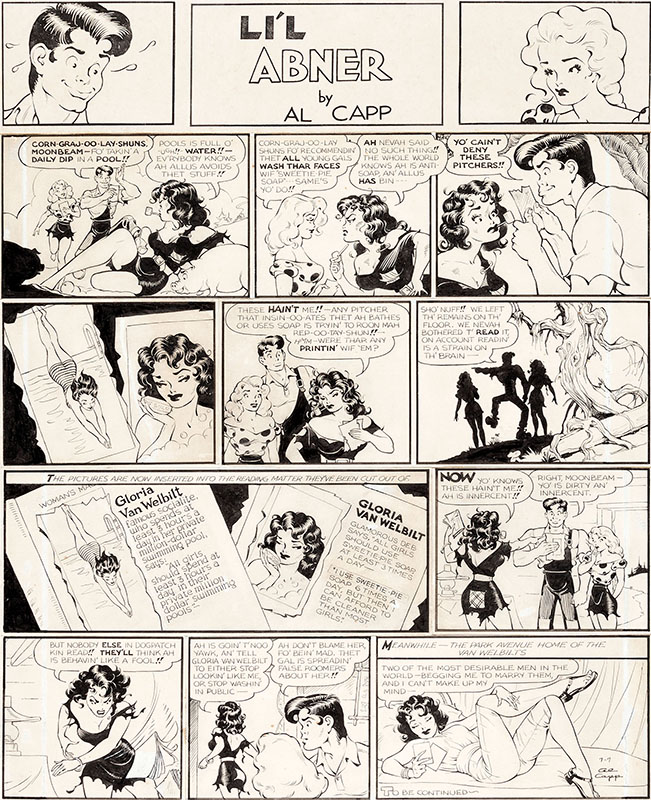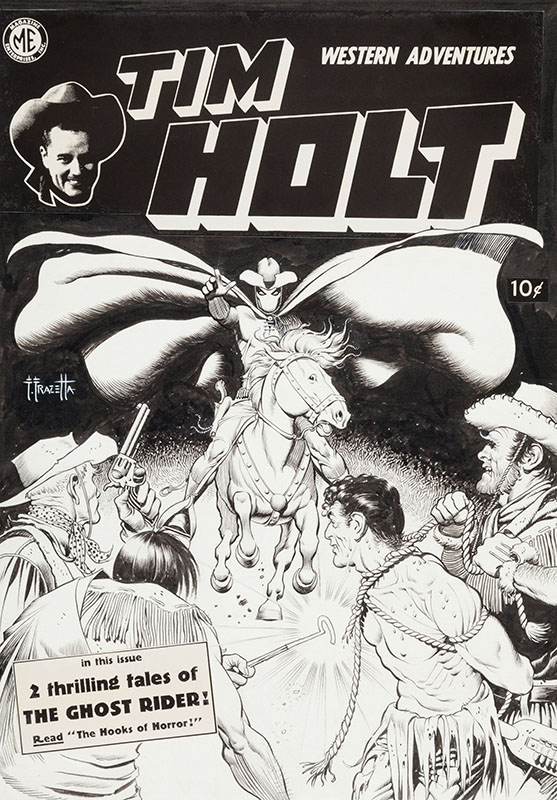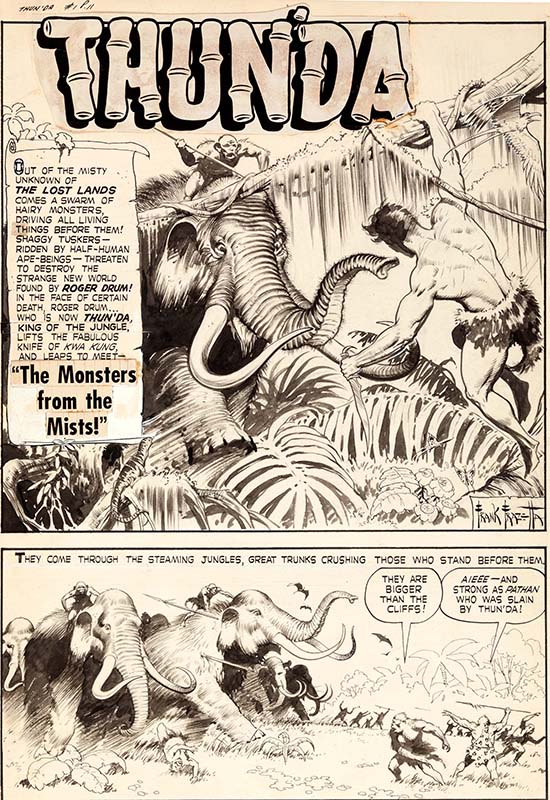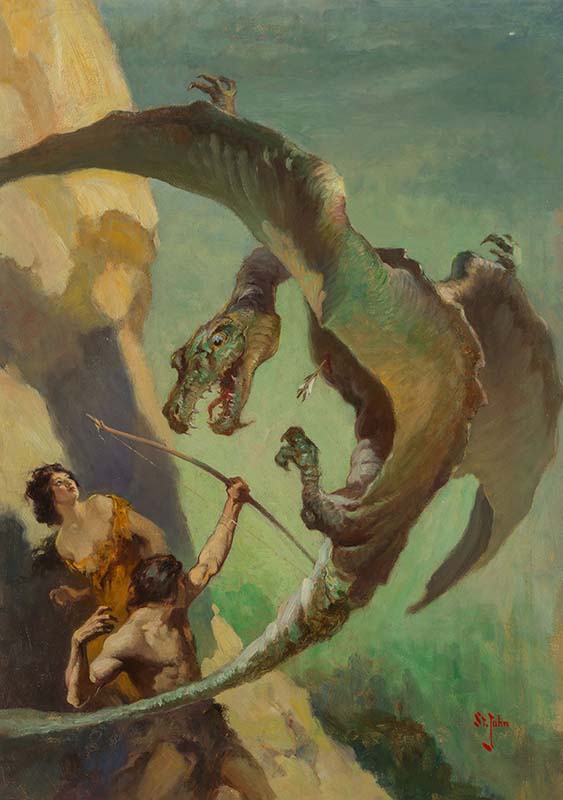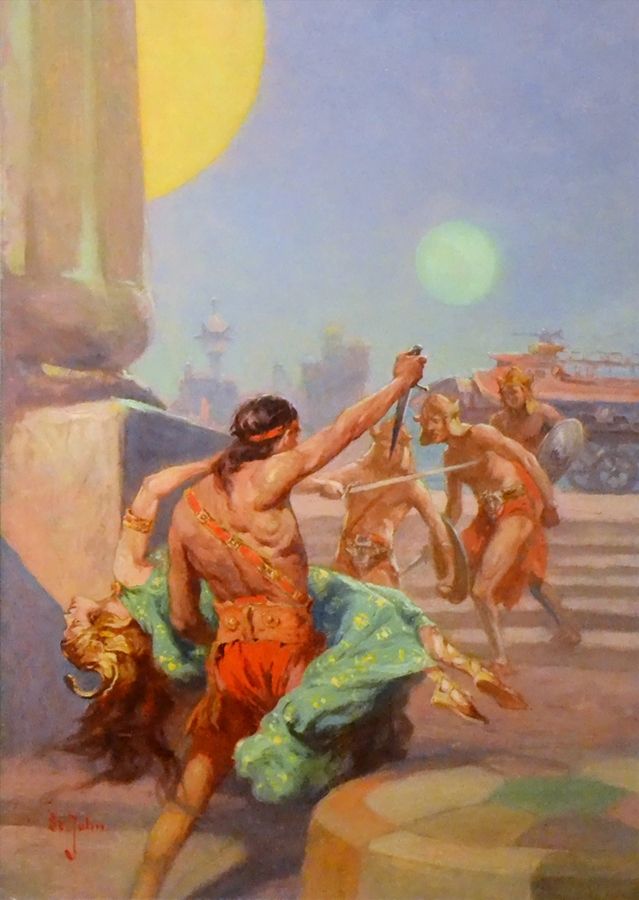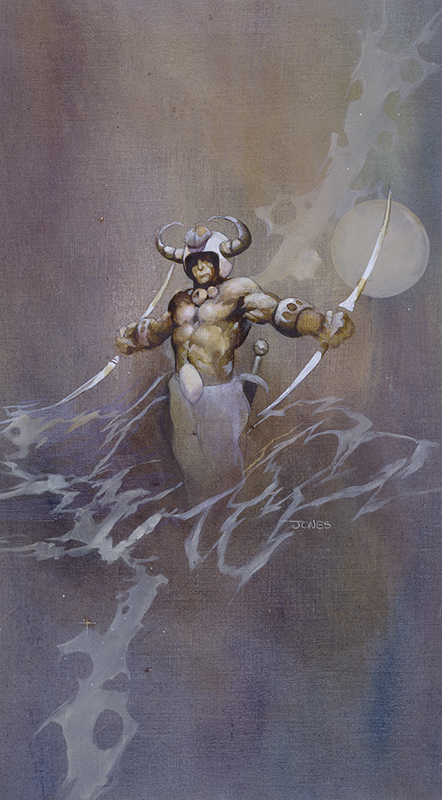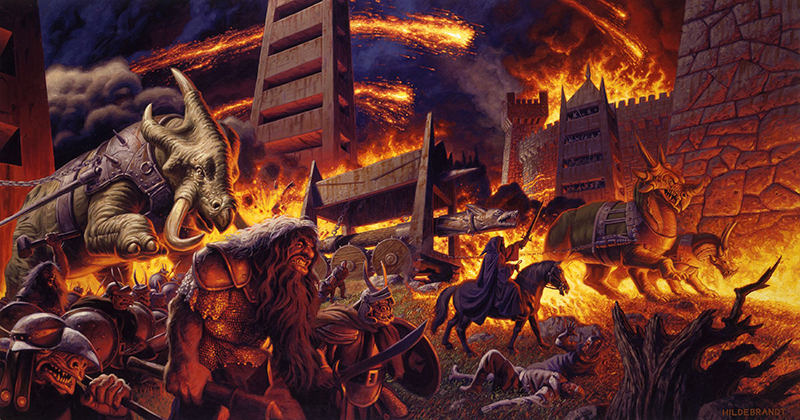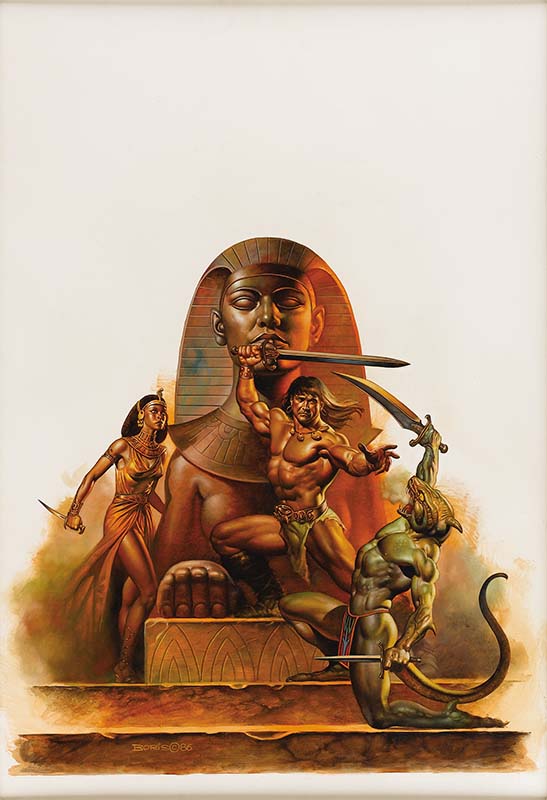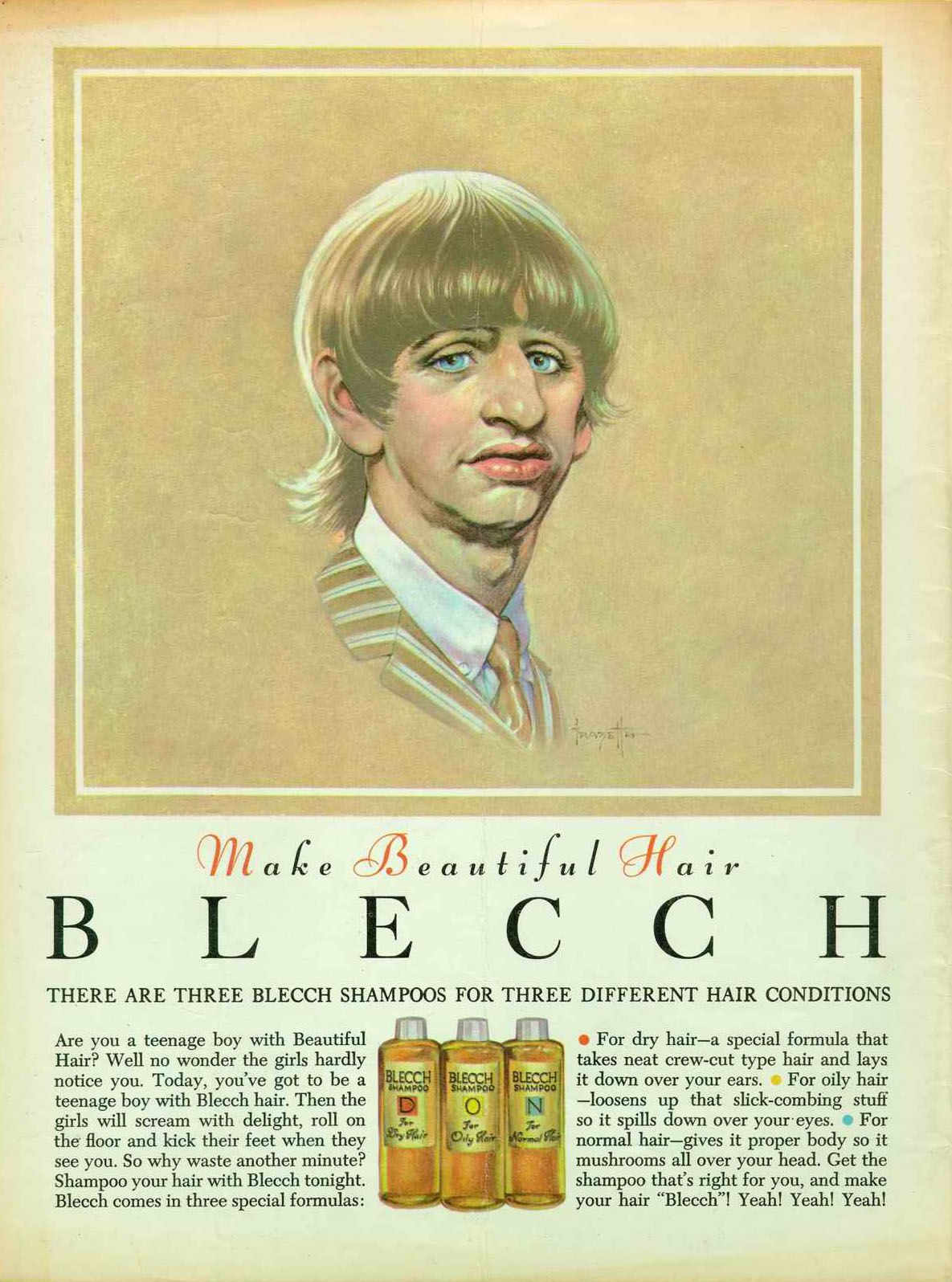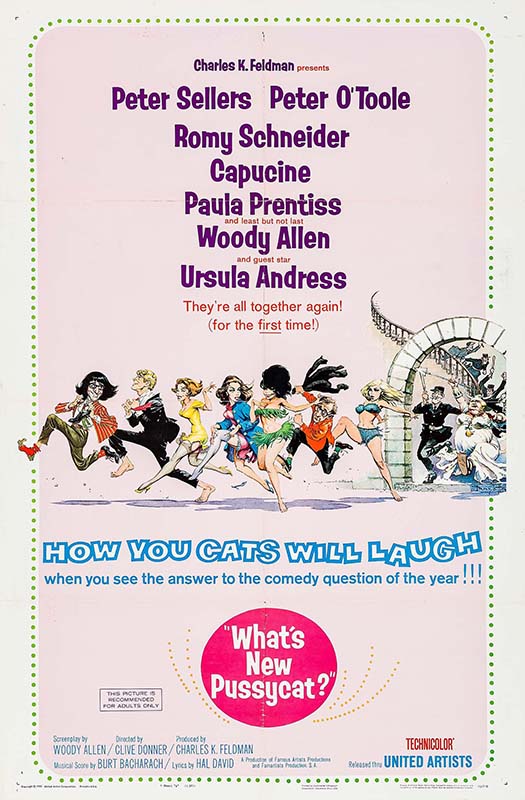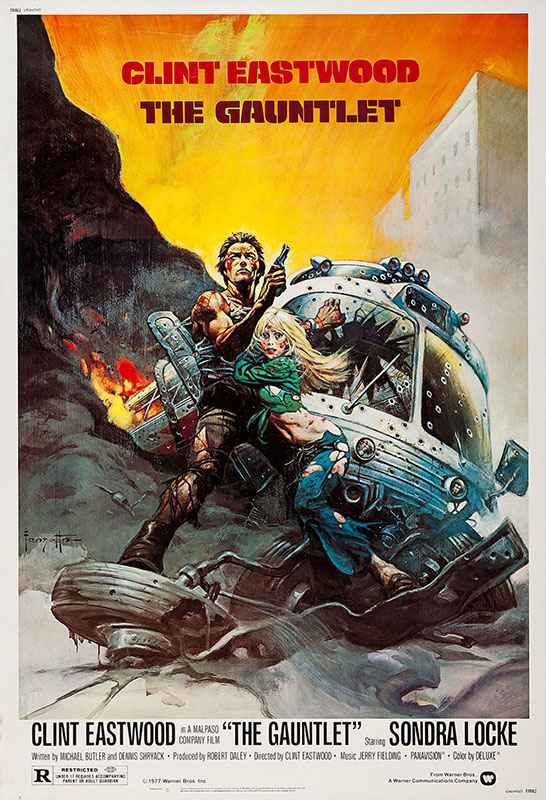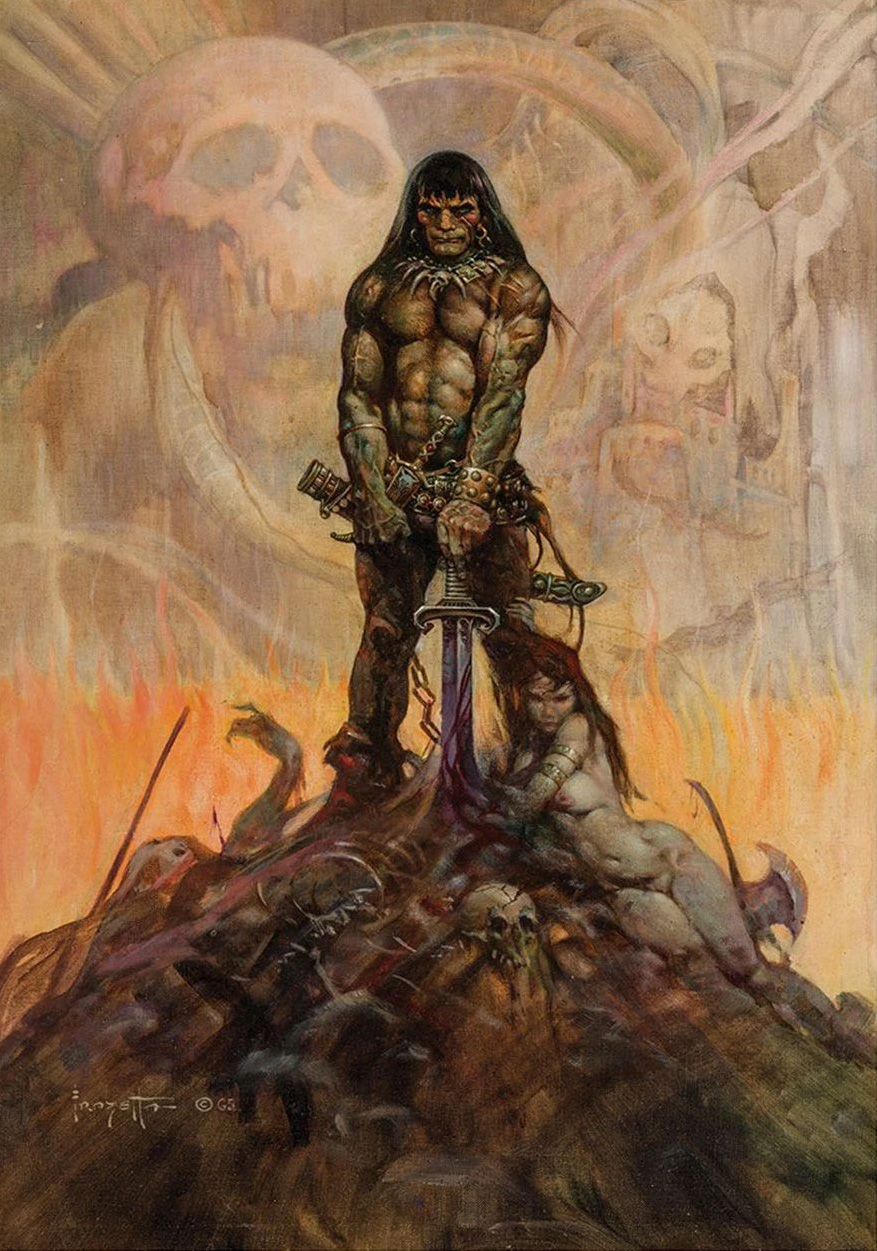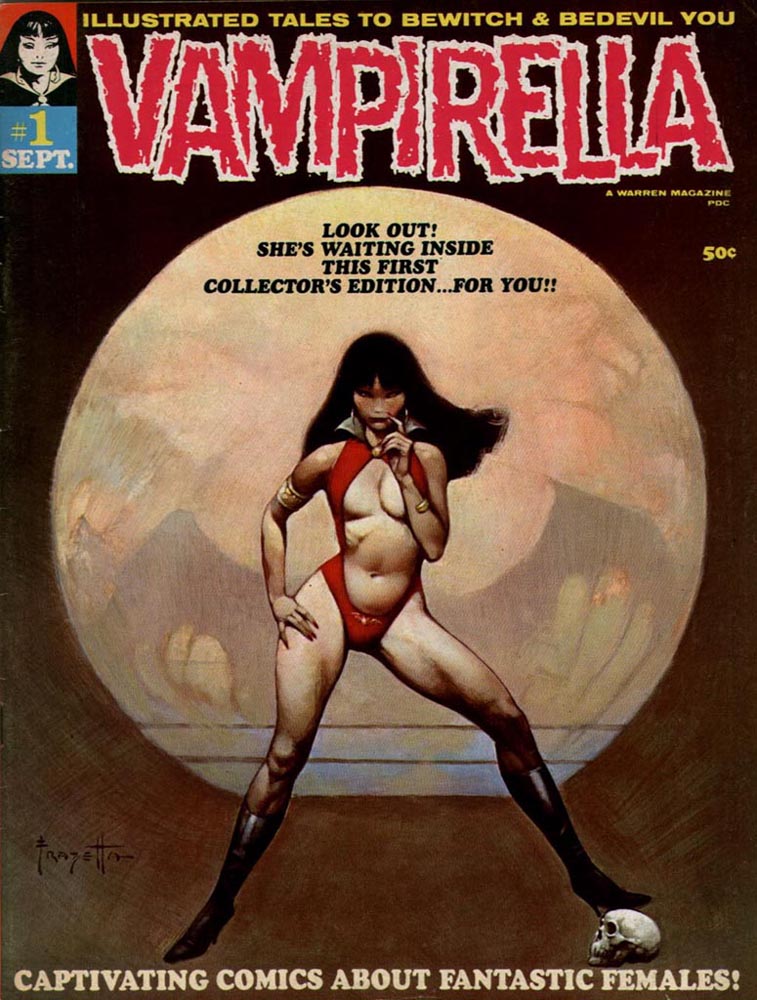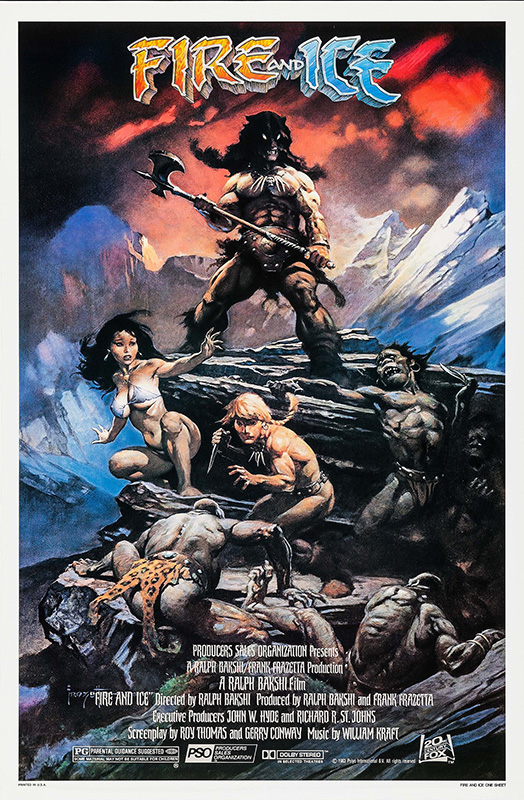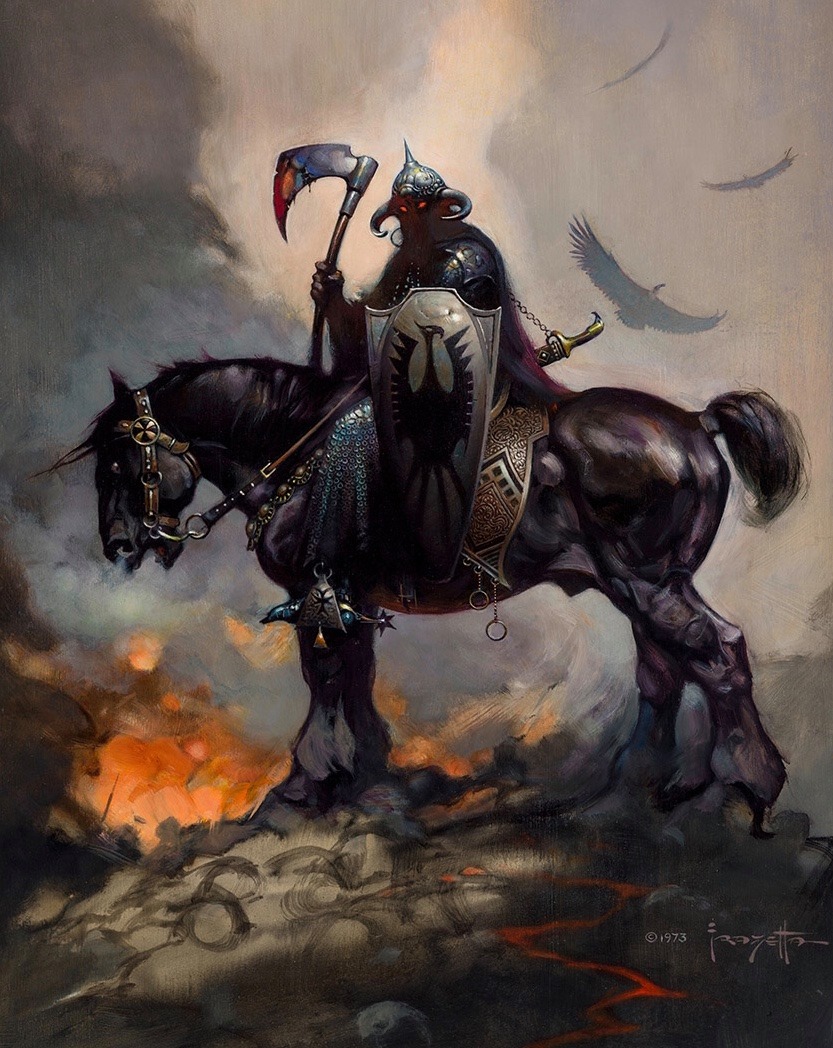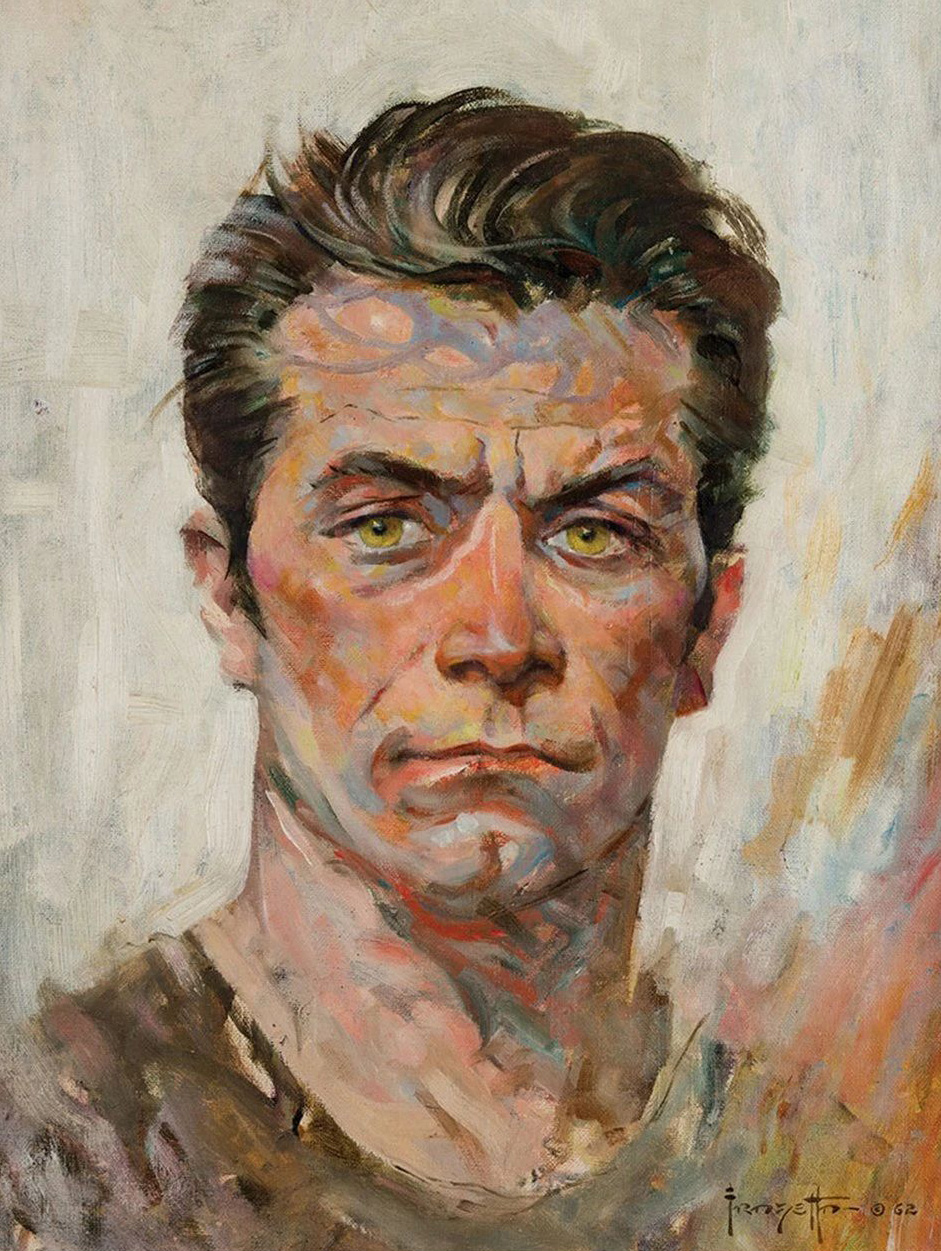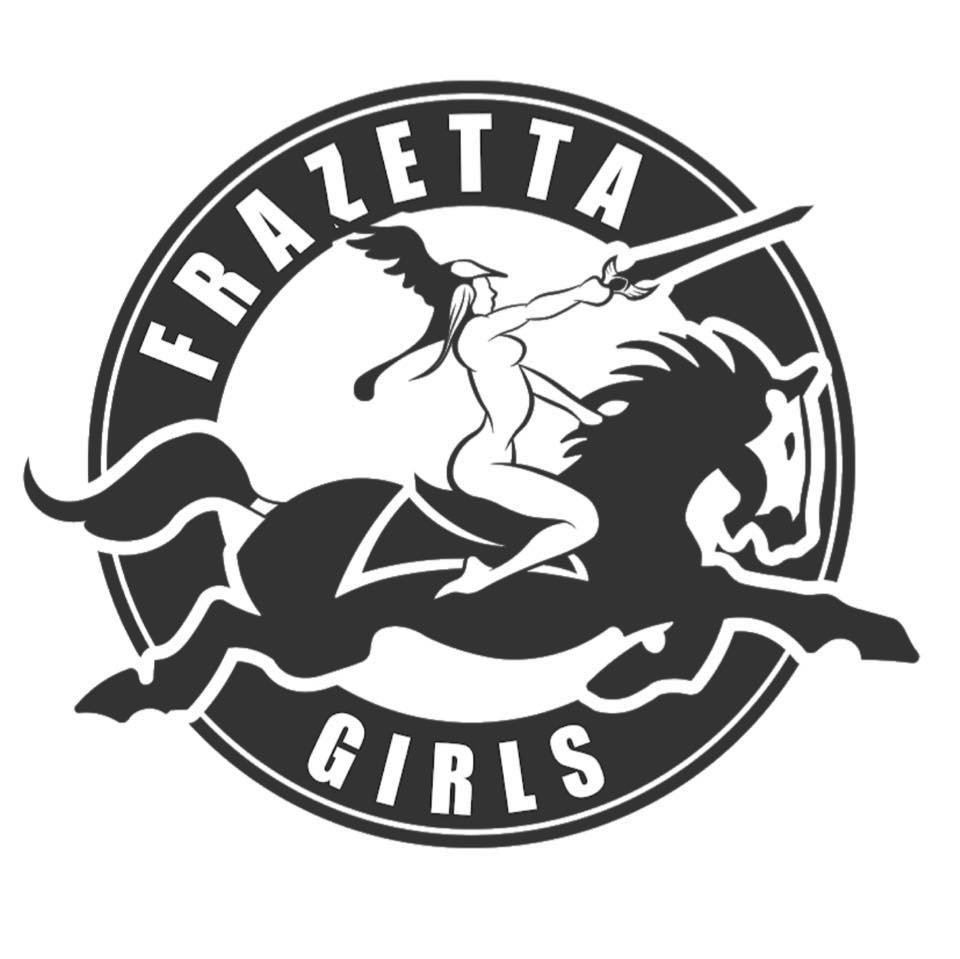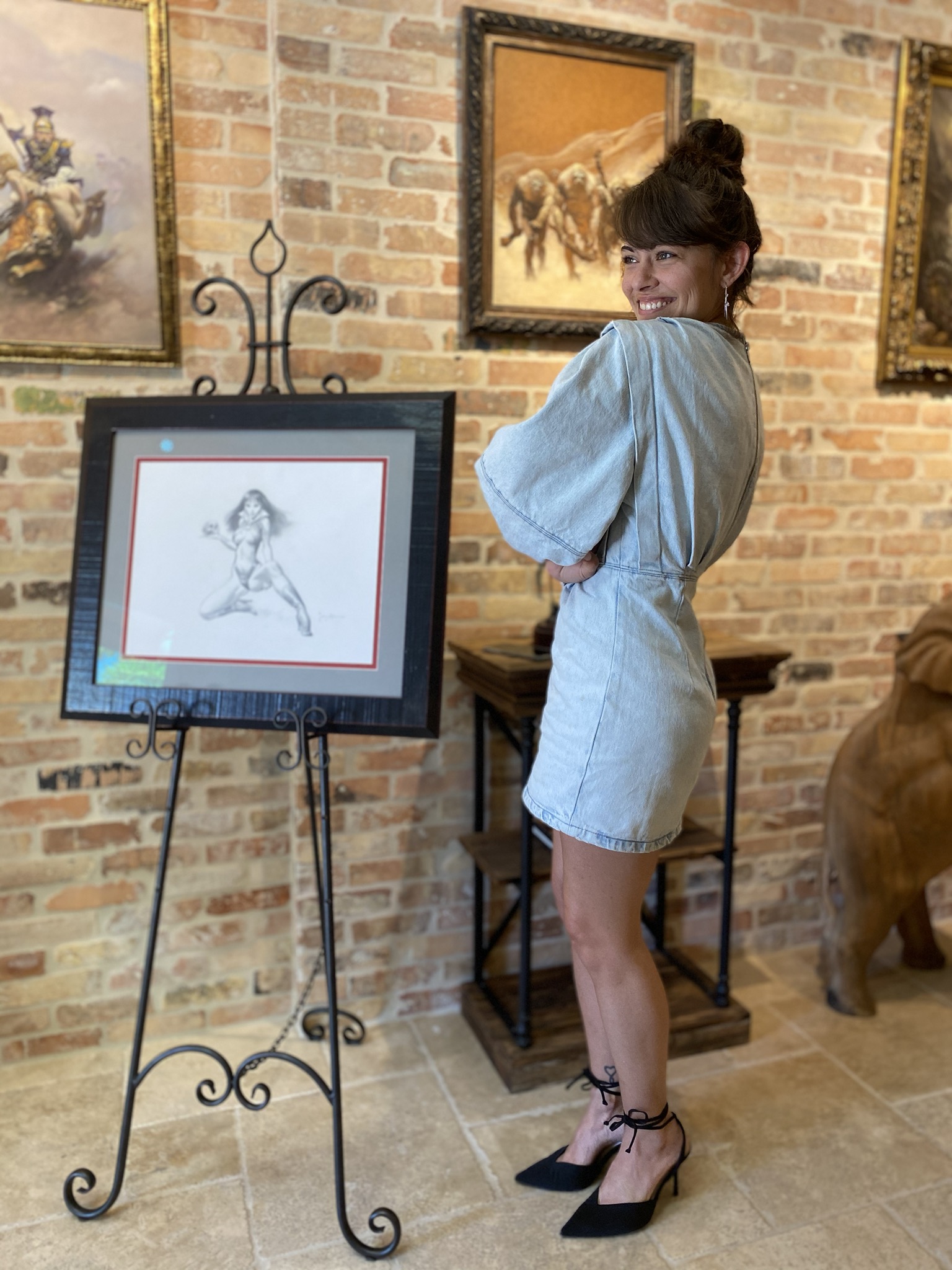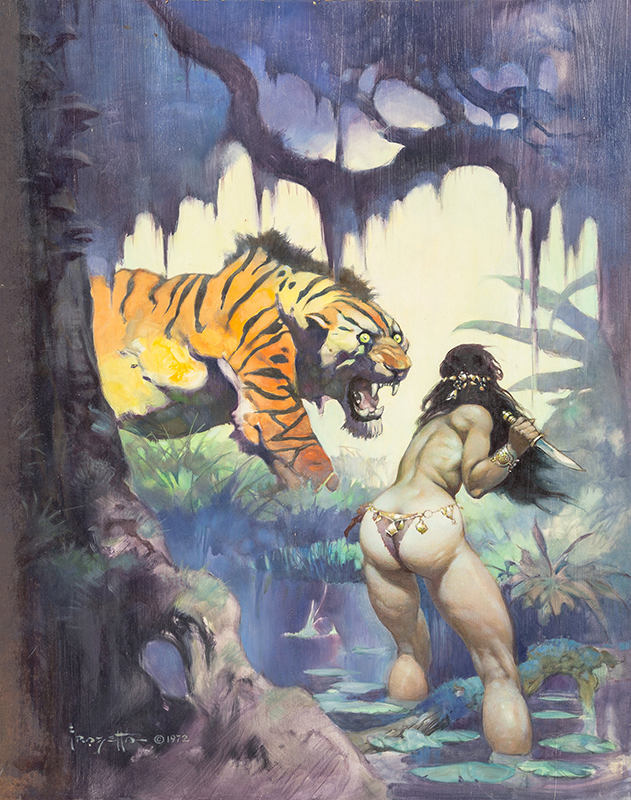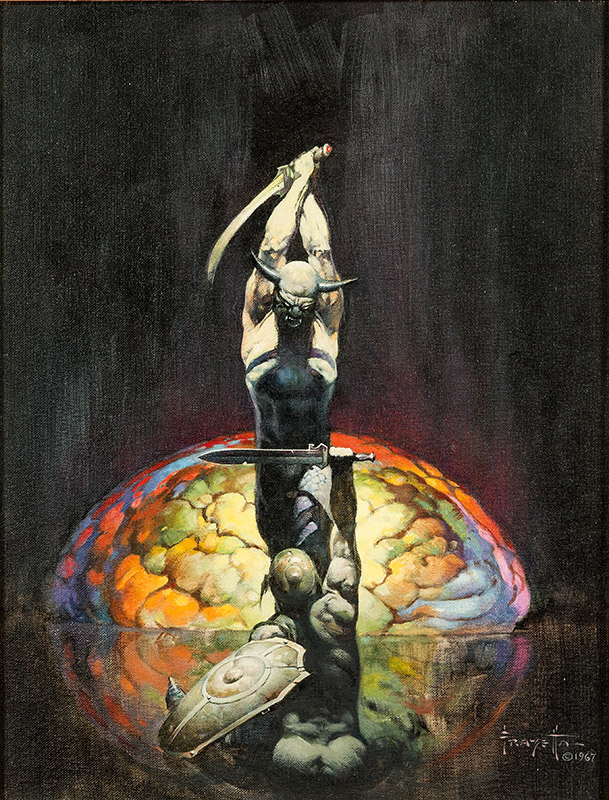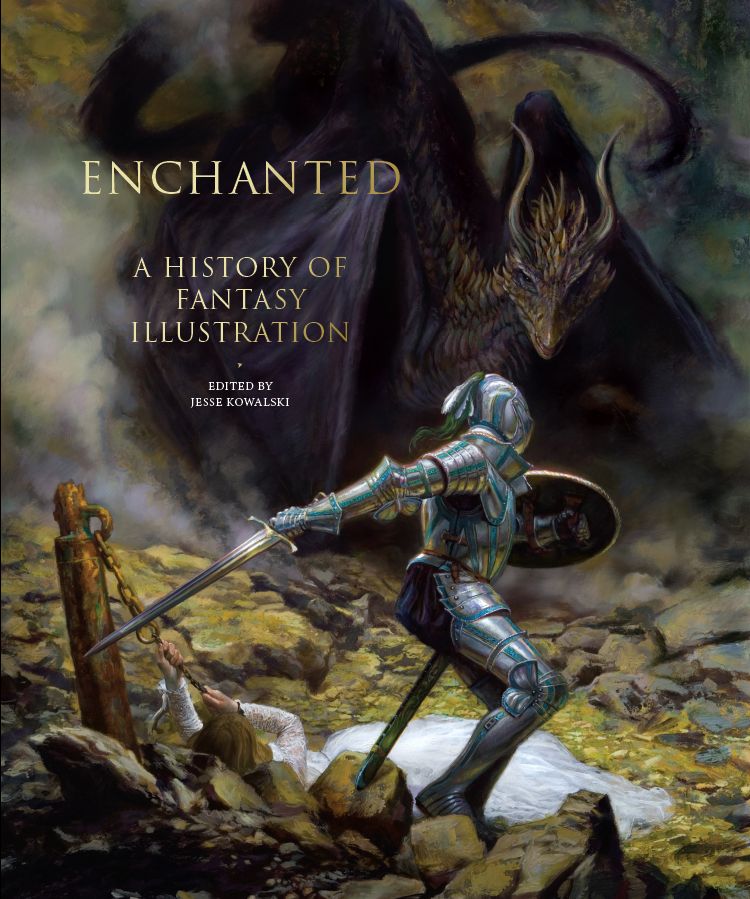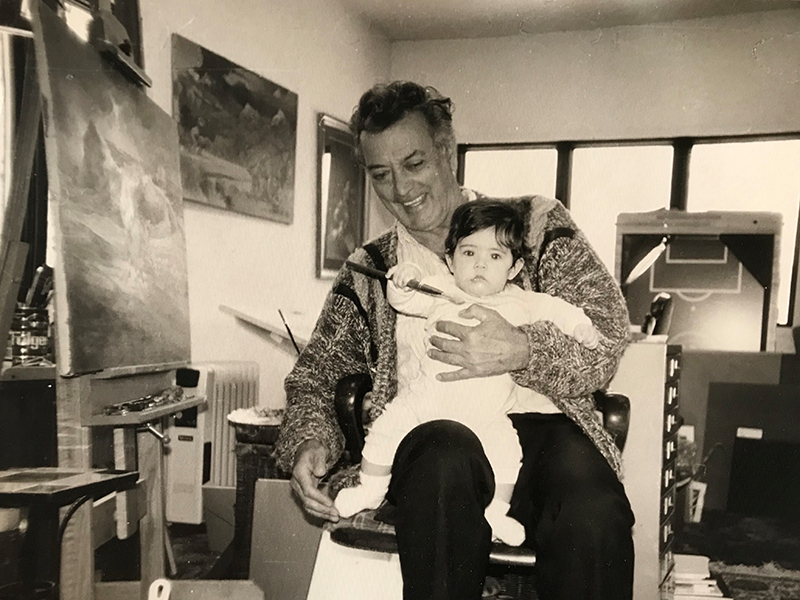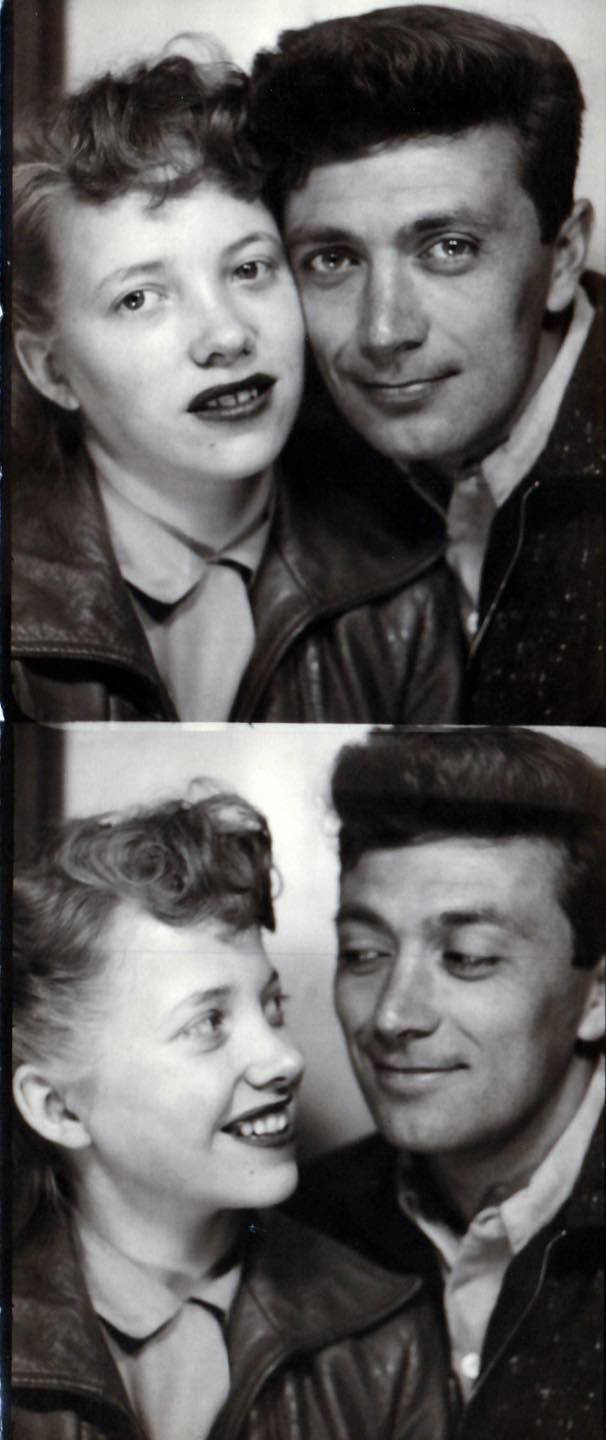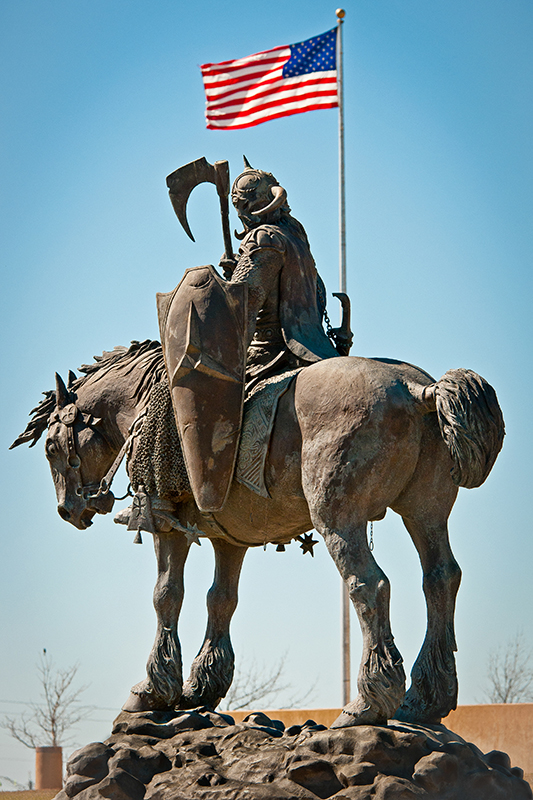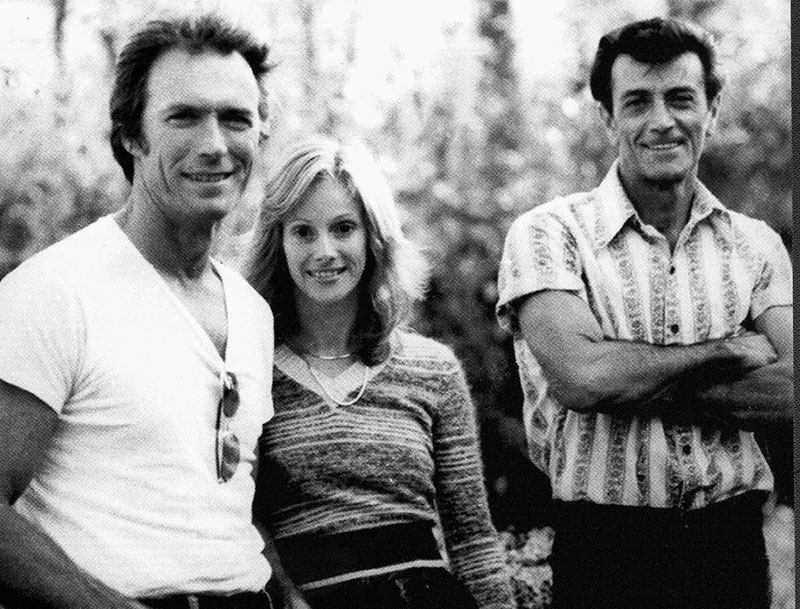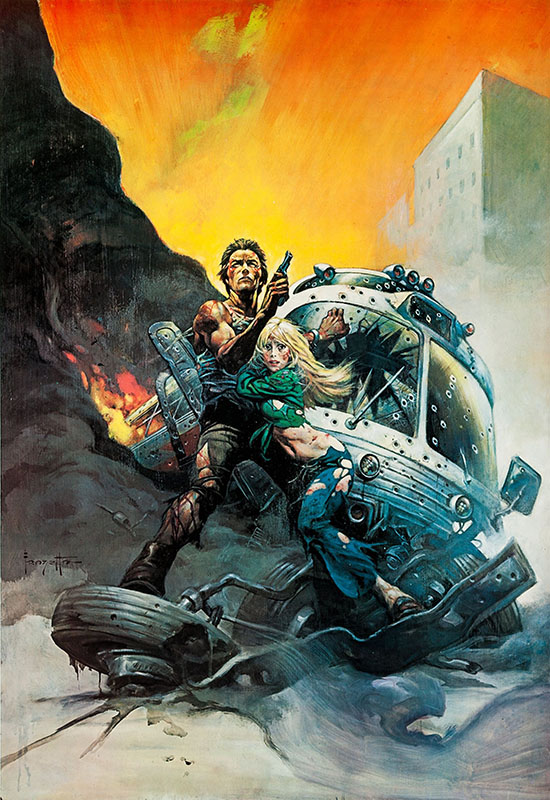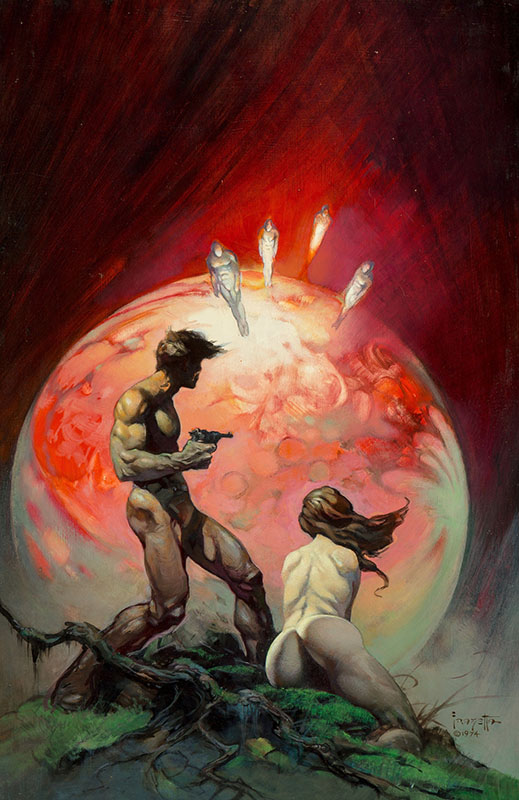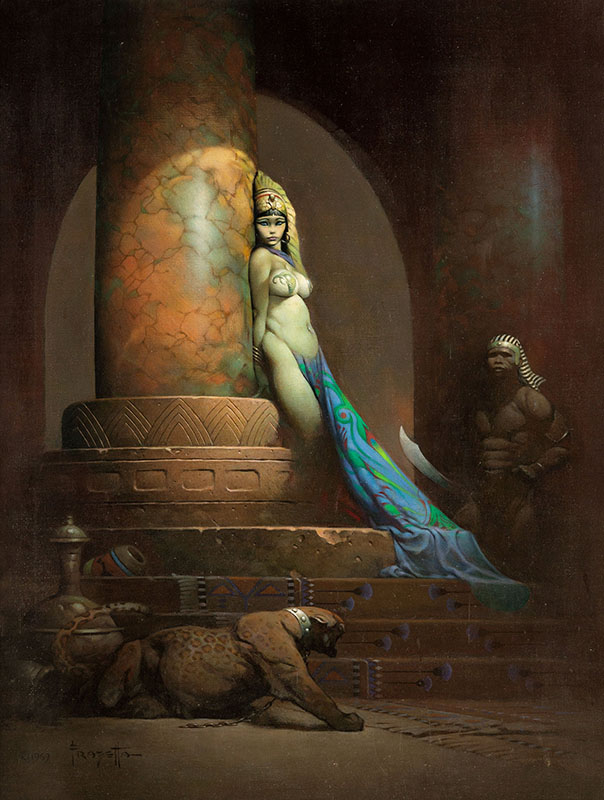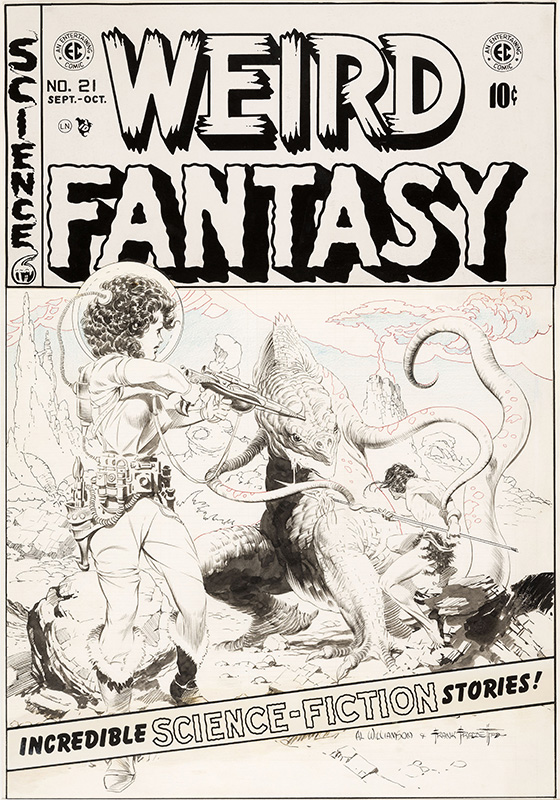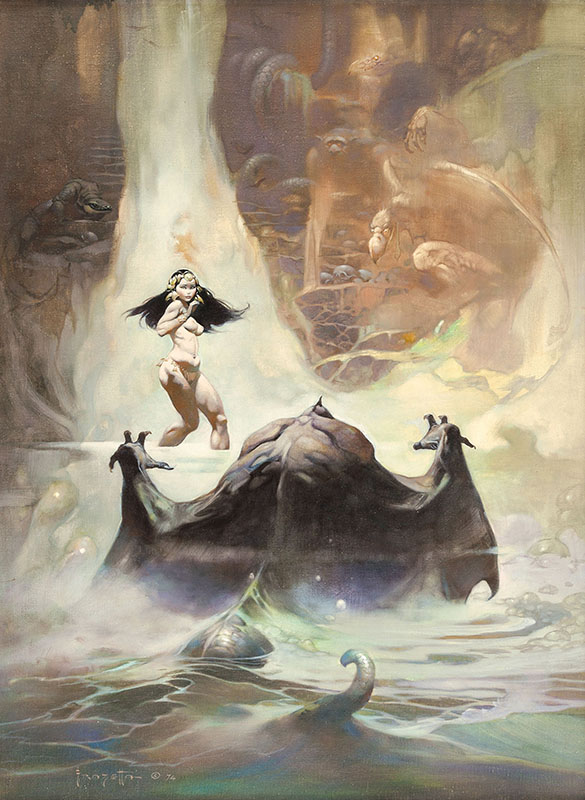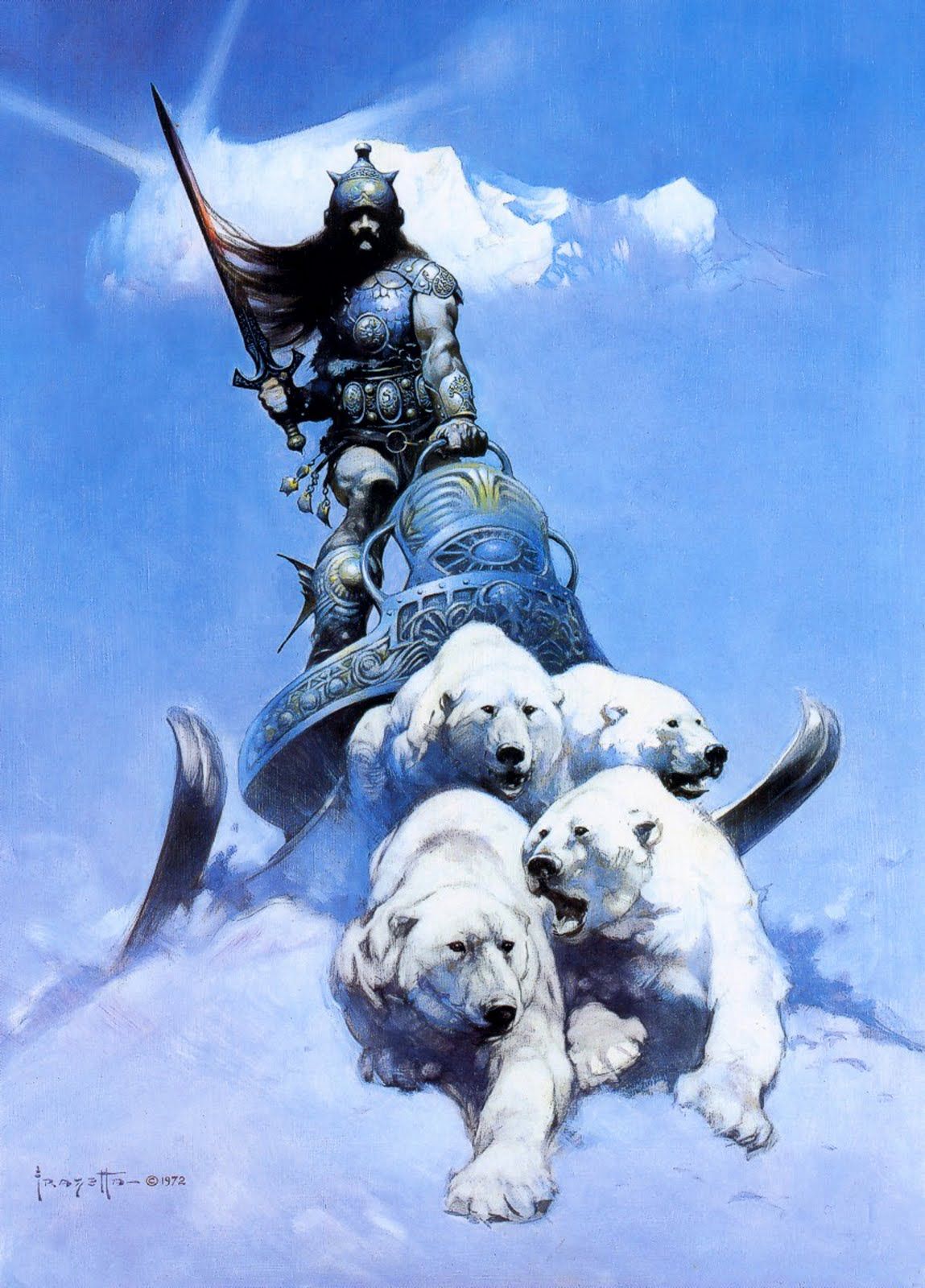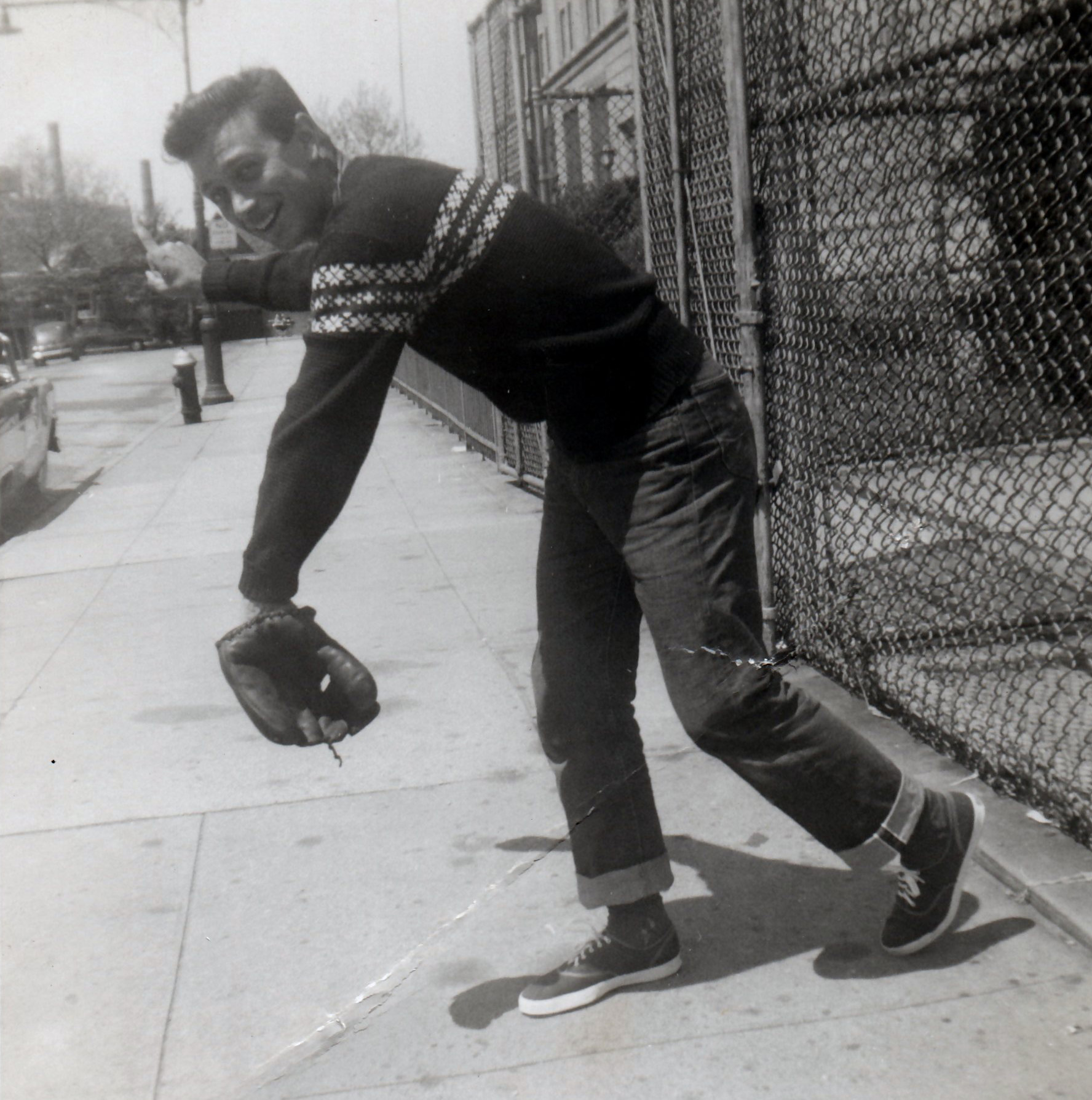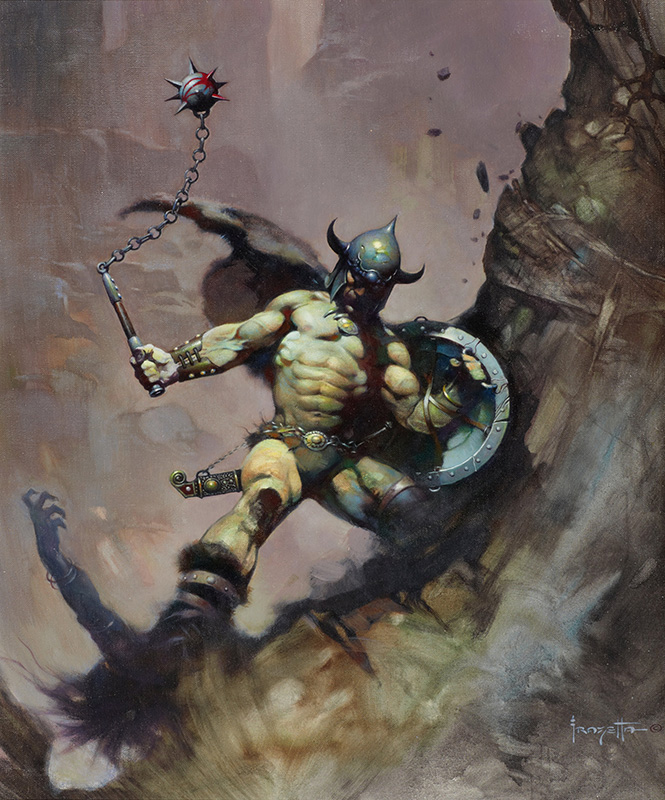Episode 04: Sara Frazetta
In this episode, my guest is Sara Frazetta, granddaughter of Frank Frazetta, a leading figure in fantasy illustration. Following his death in 2010, Sara and her mother, Holly Frazetta, formed Frazetta Girls. Together they licensed Frank Frazetta’s artwork, sell various themed products with his images, and are preparing to open a museum of Frazetta’s artwork. Sara, welcome to The Illustrator’s Studio.
Thank you for having me.
Before we start our discussion, I just wanted to give a little bit of background on your grandfather. One of the pioneers of modern fantasy illustration, Frank Frazetta began his career during the dwindling days of the pulp magazine. Though largely self-taught, he began taking drawing classes at the Brooklyn Academy at just eight years old. His first work was published in Tally-Ho Comics when he was sixteen. In 1952, he began drawing Al Capp’s popular comic strip, Li’l Abner, in addition to working on numerous comic book titles. Following the end of the Golden Age of Illustration in the 1920s, a number of artists continued working for the next few decades. J. Allen St. John, as the illustrator of Edgar Rice Burroughs’ Tarzan and John Carter series, influenced a new generation, which included your grandfather, Jeff Jones, the Brothers Hildebrandt, and Boris Vallejo.
These young artists began to lead the evolution of illustration away from traditional outlets, like the newsstand, into new arenas. The focus of many was on fantasy illustration in print – paperback book covers and magazines, on film posters and animation, role-playing games, and eventually video games. Frazetta’s illustration of Ringo Starr in Mad magazine in 1964, drew a more mainstream audience to present his work, and movie studios began to hire him to paint film posters. This included promotional material for the movies What’s New Pussycat? from 1965, Mad Monster Party from 1967, and Clint Eastwood’s The Gauntlet from 1977. However, his 1966 cover of the book Conan the Adventurer propelled him to stardom. In 1969, he painted a memorable cover of the debut issue of Vampirella. His striking paintings of Conan, Tarzan, and John Carter of Mars altered the way readers viewed the characters, and influenced other artists and film directors, including George Lucas, who visited Frazettas’s studio in 1978. In 1983, animator and film director, Ralph Bakshi, famous for his work on the animated features Fritz the Cat, Wizards, and The Lord of the Rings, invited Frank Frazetta to collaborate with him on the ground-breaking animated fantasy film Fire and Ice. Frazetta continued working through the next decades, often revisiting some of his classic work such as Death Dealer.
Although he passed away in 2010, his legacy is maintained through licensing and a massive social media presence maintained by his daughter, Holly, and you, his granddaughter Sara, through your company, Frazetta Girls.
Yeah. So a little background about how this came about. I graduated with a BA from USF in Tampa, Florida in early 2012. Soon after I was working at a post-production studio, which I really enjoyed. I was able to be creative and help cast voiceover actors, and occasionally hop in the booth to do a voiceover or like a jingle for a local commercial. At the same time, my mom and her siblings were going through a really bad legal battle… once my grandparents passed away. So around that same time, everything started to settle, and my mom, my aunt, Heidi, and my uncle, Billy, all gained equal rights to the Frazetta Estate and artwork. So my mom called me and asked if I had any interest in traveling to comic cons and building up the Frazetta brand. At the time, filmmaker Robert Rodriguez was helping propel all this into motion.
He was planning to remake Fire and Ice, and was actively exhibiting my grandpa’s original art. So he was creating limited edition prints and merchandise, and really like showing us what we could do… the possibilities. So I was excited. I was all in, I was, I think I was twenty-four at the time. So you could imagine, like, I really, I looked forward to having freedom and, you know, maybe building a business of my own. Prior to that, I never thought about grandpa’s artwork or his career, like as being something that I would be able to manage one day – that never crossed my mind. So… from about 2013 to 2016, we kind of backpacked off Robert Rodriguez’s vision of the brand. We traveled to various comic cons. We exhibited the original art with him, and you know, at that time I still had four jobs.
I was working as a real estate assistant. I was working on social media accounts and just doing a bunch of things, and Frazetta Girls was kind of just like a side business at the time. In 2017, my gears started shifting and because it just, it wasn’t lucrative, and I really wanted this to be my full-time job, my career, and bring my grandpa’s name into the future and continue to have generations and things inspired by his artwork, and I saw that as a possibility. So we stopped comic cons and it was really because I didn’t feel like we were doing it justice. I envisioned something like Alex Ross’s booth at San Diego Comicon for something… like that for Frazetta, because it’s such a, you know, it’s so iconic, it can’t be at a small scale. So we kind of backed off. And my mom stepped down from operating the company and my partner of eleven years, Joe, he took over where really like the creative director for the brand. He has a background in branding, manufacturing, e-commerce, web development… So it was kind of like the perfect harmony when we came together. And that’s how we really started to like, build the brand, Frazetta Girls, online with the massive audience that you mentioned on social media.
That’s great. And I believe at the beginning of the year that you had planned to open a Frazetta art museum in Florida? Is that true?
Yeah. COVID it messed up all of our plans, you know. We actually, we had it open for a week and, um, yeah… And we had a few visitors and, you know, I think everyone felt this way, like, “Do we close?” Are we, I mean, how serious is this? We weren’t really sure what was going on. Some of us still, some people still aren’t sure. But we did take precautions and we closed and we are planning on reopening this January – January 18th, 2021. We will be opening only two small groups of like two to four people because it is a very small space. And taking all measures to safely ensure everyone is COVID-free. So we will require masks. And like I said, small groups, but it is appointment only. And that right now is… if you would like an appointment to go… you’d have to go to our website and then contact me and we could schedule something.
So that’s the tentative plan right now. And we have about fifteen original artworks on display from my mom’s personal collection. We are trying to get my aunt to have some of her collection involved as well, we aren’t sure, though. But, there’s also on display some of his personal photographs that haven’t been seen before, his easel, my grandpa’s paint brushes, and then some of his palettes. So it’s definitely an intimate, small gallery. I think we… should probably call it a gallery rather than a museum. But we’re happy. We’re proud about it because that’s the whole goal, is to have everyone see his original artwork in person – it’s magical. That’s what you guys are doing… two originals on display, right?
Yes. In our exhibition next summer… on fantasy illustration. Yeah, you wrote a terrific introduction to the catalogue, talking about memories of spending time with your grandfather. I just wondered what some of your favorite memories of him were.
You know, I… it’s kind of a rare thing to say, but I had no bad memories of my grandfather. So I think that’s pretty special within itself. We never had any kind of problems ever. He never had to discipline me. Maybe he just didn’t want to discipline me, but I only knew my grandpa post-illness. So he started to become ill. And I want to say the mid-’80s with thyroid conditions, and that really strained him. He leveled that out when he became… he got on the right dose of thyroid medication. Unfortunately, he had severe strokes in the early ‘90s – I think his major one was ‘95. So I was in kindergarten at that time, but you know, what I do remember about my grandpa was before the major stroke… he was very active when we were in… when I was in Pennsylvania and we were walking the property, we’d walk for hours and pick fruit off of the trees. And it was just like, you know, something like out of a storybook, it really was. But my favorite memory, I have to say, is our greeting. Every time he would see me, it was like he hadn’t seen me in years. Like it was like a celebration and that’s… I don’t… I’ve never met anyone that has celebrated my entry.
So, he married his wife, Eleanor Kelly, in 1956, and then she went to become his manager, correct?
Yes, she did.
And what was she like?
You know, as a grandma she was equal to my grandfather and being like, almost like a story book grandma, she was just generous. She was fun. She was interesting. She had very few boundaries. One was, do not ever call her during Wheel of Fortune at 7:00 PM Eastern time. Otherwise she wouldn’t talk to you for a solid week, and that goes for all grandchildren and children. So that was like her… really her only boundary, and maybe taking your shoes off in the house. But other than that, it was, “Let’s just have a good time. Let’s dance, have music, watch movies, cook…” Like she just, she knew how to live life. And you know, after being in the business for a few years, I’ve heard stories about how she was and how she interacted with the industry and licensing.
And she was a little bit hard to deal with. That’s the consensus of most interactions, but they also said, you know, that it was kind of balanced out by her quirkiness and her ability to have a conversation about any topic. She was very well-read and very interested in many topics, but, you know, she had to guard my grandpa’s artwork, like very fiercely, because he did not. He gave… he’d trade his artwork for cameras and undersell it. So she was… she was the gatekeeper of his business.
Yeah. From what I’ve read, she seemed to be… she seemed to be taking care of his career pretty well. Over the years, your grandfather received many, many awards from his colleagues. In 1966, he won the Hugo award for Best Professional Artist. He won the Chesley award in ‘88, ‘95 and ‘97, the first Spectrum Awards Grandmaster in ‘95, the Eisner Hall of Fame in ‘95. In 1998 he entered the Society of Illustrators Hall of Fame, the Jack Kirby Hall of Fame Lifetime Achievement Award in ‘99. In 2001, the Lifetime Achievement Award from the World Fantasy Convention. And in 2009, the U.S. Army installed a statue of his famous Death Dealer at Fort Hood, Texas, which was renamed Phantom Warrior for the Army’s Phantom Corps, located at the base. With all these awards and accolades, did he understand why his work was so popular with fans?
He did. He did. He knew that he was very talented. I think what like really solidified everything was when he had his documentary, and II know that because of how many times he would watch it and just say, “Oh, wow… look at what I did.” And I mean, it was really like condensed into one form of entertainment that he loved the most, which was film. So for him to be able to watch his achievements, I mean, he was just over the moon about it excited, you know, and, and he took… he loved the praise, but he also took the negative comments to heart as well. And his personality I think more focused on the negative because it almost in a way fueled him, like, that’s how it fueled his competitive nature.
So if someone said he couldn’t do something, or they just didn’t like his style, he would say, “Well, I’m going to change it up and I’ll show them.” And so he really had an outward drive, like for people – he wanted to please people. So I don’t want to say that he didn’t enjoy his success. He did… and he also enjoyed his achievements, but he was the type of person that would also more so dwell on the negatives. Like, “Could you believe someone said this about me?,” or “They didn’t think my artwork was good.” And so, but again, that’s kind of like his personality. That’s what fueled him to create and to be better.
Yeah. So many celebrities went to visit him in Pennsylvania. I understand he didn’t like to travel much and didn’t want to leave home. So he had people like George Lucas, Clint Eastwood, Sylvester Stallone… went to see him. Was there anybody that he was especially excited to see?
Well, he mentioned that it was cool to see Clint Eastwood. He said that he really got along with him. He didn’t mention much about Sylvester Stallone. But again, I think his recollection was fairly poor by the time we could have those conversations. I do know that he had a few people he really idolized and those people, the two people that come to mind, are Frank Sinatra, who has nothing to do with… well it has everything to do with art. He’s one of the best singers ever. And Robert Mitchum the actor. So I think he was, he was very seldomly star struck, but if he would’ve met his idols, or like any of the Mets players or Mets baseball players, he would have been, you know, just totally excited, but to become excited, he had to have been a fan. And I don’t know if he was so much of a fan of the celebrities he did… he was able to meet at the time.
And it seems like in the poster that he did for Clint Eastwood’s The Gauntlet, that the body of Clint Eastwood… it seems like it’s modeled on your grandfather.
Everything was modeled on my grandfather. If you really look, every single man is Frank. Not every woman is Ellie. He’d get very angry about that myth. He’d say, “Why do you all think it’s Ellie?” But he did base a lot of them off of my grandma, but he also actually in his early works… in his comic panels… he based a lot of his art off his sisters. His sister… Adele was a knockout and I can go in and spot in his comic panels, so many Adele’s everywhere. I’m like, “There’s a sister, there’s a sister…” He had a range in like who he thought was attractive. Like I said, he loved film. So he had, you know, many crushes on women, and he loved to look at women. And I’m sure that was more so in Brooklyn. When he moved out to East Stroudsburg, that wasn’t the case so much anymore…
I always wondered about his painting style, because I’ve heard that he was able to do a painting in one day, and he was often very proud of how quickly he could do an artwork. Is that an urban legend, or was that true?
You know, I know he could do his inks incredibly fast and just do them in a day – a couple hours with most of his drawings. But the quickest I know that he did an oil painting was Neanderthals and that was in two nights. I think he… I know he said it was one night, but the way that it has to dry… but you know, he liked to exaggerate. He liked to tell stories. So over time, his stories become a little bit more unrealistic.
Is it true that he would touch up paintings after several years… he would kind of find things and touch them up?
He was never, I mean, there were paintings that he was like, “It’s done. It’s perfect. I don’t have to change anything.” But if he didn’t feel that way about a painting, oh yes, he would go in and re-do the face and the body over and over and over again. Actually right before he passed away, he was working on the National Lampoon cover, I cannot recall which issue it was, but it was originally a blonde woman tied to a totem pole. And she was being attacked and he actually changed… he stripped it so many times that it became like, almost like a white blur. And then it became like, we think it became like a ghost of my grandma. It looked like my grandma, like as an older woman, but as a ghost. Now he was not feeling well then – he was painting with his left hand. So at the end, anytime he got any of the artwork, my grandma would be like, “Get away from it. Don’t touch it.” But you know, mostly throughout his career before he had to be left-handed, he usually did justice to the art. There were a few instances where I look back and say, “Oh, no. Why did he do that?” One being…
He did change Egyptian Queen, the face on that, right?
He did and I think that change was necessary just for the sake of the painting itself. But the original face was perfect on it because it was a cover for Creepy. So it was… she was afraid that the panther is coming at her. So it really emoted what it needed to, but when he got it back, and he wanted to hang it in his museum one day, he wanted her to have a softer, more beautiful face. Just a resting… which I think it goes into the narrative of just her being at ease with anything coming. So, you know, you can, it’s fantasy art. You can, you know, make it into a storyline, whatever you want to, which is the beauty of it.
That’s great… and Norman Rockwell… he couldn’t paint anything without the use of photography. I was wondering if your grandfather, if he used any models or photographs, or if he worked from memory?
So that was another urban legend. Over the years he claimed he never used photo references, but yeah, that’s a lie. So in his early years when he was doing comics and working for Al Capp for Li’l Abner, he would actually go onto the rooftop and like around Brooklyn with Roy Krenkel and his, and the Fleagle Gang. So those guys would help each other out… that pack of artists and they would get the references. And so he, I think he was able to do a lot from memory when he was working like in the ‘60s and ‘70s, because of how many references he had in those early years and how much like assistance he had. And then, you know, there were drawings later, like in the early ‘90s and… the mid-’80s where we actually would find the drawing. And then I found a picture of my grandma that matched the exact drawing. So we’re going to publish those one day just because I think it’s just important to tell the truth about an artist and that’s how you propel a legacy. You have to, you have to give truth, but I don’t think there’s anything wrong with using photographs. I mean that’s how you learn.
Sure. Well, most illustrators do. Has there been a really well done biography on your grandfather?
Not really. Painting with Fire, I would say was the best one so far, but we are working on that. We’re working on more publishing and hopefully more biographies will be included in those projects that we’re working on. But we would love to have another documentary, it’s just going to probably… it’s going to probably take a few years for that to be complete. And then, like you said, to be able to like tell the truth of Frank Frazetta and who he was.
All right. That’s great. Let’s see… when he did What’s New Pussycat?, he was paid about $4,000. But last year the Egyptian Queen painting sold for five and a half million. So I was wondering what do you think he would think about his artwork selling for that much?
So he… I know what he would think because he actually broke a record when he was alive. They sold Conan the Destroyer, and that sold for $1.5 million. So he knew about it. He didn’t think anything about the actual money and what he could buy with it. Again, he was competitive, so he was thinking of, “I just broke a record. I’m so happy.” I mean my grandpa was very humble when it came to material things. The most he would spend would be on a camera, but those were usually traded. So he was very frugal. And he… I think he would have just been really proud again, that he broke another record and he would want to just keep seeing them go higher and higher and say, “Look what I did. Look what I did for everyone.” He’d be very pleased.
And do you have any favorite images that he painted?
My favorites vary from day to day. I look at his artwork so much because this is now my career. But lately I’ve been really loving his space themes. So like Dream Flight… Space Encounter… I really love the way he textured the planets and like the space themes and the girls, the fairies. So right now those are my personal favorites, but I mean, it’s kind of incredible. And I think all Frazetta fans like, know this already, but because I’m somewhat new into understanding his career and like the immense, like impact he’s had on culture, I haven’t studied it as much as some of his fans that have been lifelong fans. And when I look into the backgrounds, I still find little surprises, like, “Is that a face?” And even in like Conan the Barbarian and Conan the Adventurer, you look in the back… there’s such a Renaissance feel about it. And that’s what I think was so amazing how he paired like Renaissance art with fantasy art and like created his own… completely his own style. And so yeah, my… to answer that, I really… I have some that I don’t really prefer, but most of his collection, I really love for one reason or another.
Sure. And is there a certain painting or paintings that are most requested by fans?
Death Dealer is definitely the favorite – Death Dealer I. I mean, he’s just… he’s iconic. And then Conan the Barbarian. I mean, the two icons… I’d say that the top three: Silver Warrior, Conan the Barbarian, Death Dealer I.
I’ve seen a number of your own original artworks on social media, and you do very well. Did you take formal art training or is it just part of the Frazetta gene?
So I never, this is embarrassing grandpa, but I didn’t, I just, I never did any art classes in high school, but the last art classes I did were probably like in elementary school and I didn’t think much about it. I have… I was more into like people watching, like, I’m a people person, so I’m very into everybody else. So school, I was very distracted because, you know, I’m just trying to learn about all these personalities. But I actually had a surgery in 2017 and I was forced to not move because of the surgery. Because I’m a very… I’m like my grandpa – a very active person. I was in the gym every day weightlifting. So being locked up basically in my home, I just like randomly picked up a pencil. And I looked at one of his first… comic strips and I just started like copying it and I was like, “Hmm!”
And I was like, “Hmm, I can kind of draw. That’s weird.” So then I just… I started sharing it on Facebook and I mean, I look back at my 2017 drawings and they’re terrible, but I’m still to… my level of expectation of myself, I have a long way to go and I still need some more training. I started… I found a couple of art classes online, so I’m learning hands right now and it’s terrible. But you know, anatomy, like even my grandfather after he was about fifteen at the time and he was… he had jobs coming in and Ralph Mayo, he was an art director at… I can’t think of the company right now, but he was an art director and he told my grandfather, he said, “Listen, you need to learn anatomy.
So go home with this George Bridgman book and study.” And he came… he actually went through the whole book that night (he said), and he came back and he said to Ralph Mayo, “I learned anatomy.” And he’s like, “Okay, you arrogant teenager. You have a long way to go.” But but so I’m kind of on that same, like, I guess level right now is like when my grandpa was twelve. So hopefully by the time I’m like sixty or seventy, I can feel proud of the work that I’m doing.
And your grandfather was big into sports, right? He was asked to be, I guess… to join the major leagues… the New York Giants in the 1950s?
Yeah. And it was a lot different than, and they were like farm teams and they had to travel and I guess he had to go to Texas. So the… and the pay was terrible. It wasn’t like today, they had many teams, small teams. I’m not, well-versed in sports, so I don’t know what I’m talking about…
I always wondered though, for such a great fantasy artist, you know, fantasy and sports don’t really go hand in hand. So, how did he reconcile the two?
For him… I found this interesting. It was in an early interview and he talked about how he could actually, when he was working for Edgar Rice Burroughs and drawing Tarzan, he said that he could, in his mind because he was so athletic, become Tarzan, and that’s how he would then project it onto the canvas or the paper, just from his own knowledge of movements and the athleticism. So I think that honestly really helped him because he was so aware of, like, his own body, that he could then bring that kind of movement and that energy into his art. But I mean, as for like sports… anyone that ever met him knew that he would rather talk sports over anything. I mean, photography was a close second. And then art… if it was about his art, then he would talk about it.
But he really, like, he loved… his top three would be baseball, hockey, and golf. And he played baseball all his life until of course his illnesses. And he wasn’t able to use his arm anymore. And you know, he just… he was such a fan. He loved, he lived, and breathed the Mets. They were, I think, pretty terrible when he was alive. So he was usually very angry about their games. I do remember that. I think they’re still terrible, but again, I don’t know what I’m talking about with sports.
That’s fine, neither do I. All right. Well, that’s about all the time we have for today. I want to thank you for your time, Sara, and on behalf of all fantasy and illustration fans, thanks to you and your mom for all you do to keep your grandfather’s memory alive.
Thank you. It’s an honor to do so. And thank you for having me.
Alright, so please check out, frazettagirls.com and our own websites, nrm.org and illustrationhistory.org, which hosts a growing repository of information with essays, resources, and biographies of many illustrators, including that of your grandfather, Frank Frazetta. Thank you so much.
Thank you.
VIDEO
IMAGE GALLERY
01 Frank Frazetta 1950s
02 Clinton Pettee, Cover illustration for All-Story, October 1912
03 Frank Frazetta, Li’l Abner comic, November 7, 1954
04 Frank Frazetta, Tim Holt, no. 17, November 7, 1954
05 Frank Frazetta, Thun’da, King of the Congo, no. 1, 1952
06 J. Allen St. John, At the Earth’s Core book cover, 1922
07 J. Allen St. John, The Master Mind of Mars, 1928
08 Jeff Jones, The Planet Wizard, 1969
09The Brothers Hildebrandt, The Siege of Minas Tirith II, 2000
10 Boris Vallejo, Egyptian Warrior, 1986
11 Frank Frazetta, Ringo Starr parody ad for MAD magazine, October 1964
12 Frank Frazetta, What’s New Pussycat? film poster, 1965
13 Frank Frazetta, The Gauntlet film poster, 1977
14 Frank Frazetta, Conan the Adventurer book cover, 1965
15 Frank Frazetta, Vampirella, no. 1, September 1969
16 Frank Frazetta, Fire and Ice film poster, 1983
17 Frank Frazetta, Death Dealer, 1973
18 Frank Frazetta, Self-Portrait, 1962
19 Logo for Frazetta Girls, LLC
20 Sara Frazetta at The Frazetta Art Museum, Boca Grande, Florida, March 2020
21 Frank Frazetta, Escape on Venus, 1972
22 Frank Frazetta, The Brain, 1967
23 Book cover for Enchanted: A History of Fantasy Illustration, 2020
24 Holly Frazetta, Frank and Sara Frazetta in his studio, 1989
25 Ellie and Frank Frazetta, 1950s
26 Frank Frazetta, Phantom Warrior statue, Fort Hood, Texas
27 Clint Eastwood, Sondra Locke, and Frank Frazetta, 1977
28 Frank Frazetta, Artwork for The Gauntlet film poster, 1977
29 Frank Frazetta, Time War book cover, 1974
30 Frank Frazetta, Egyptian Queen, 1969
31 Frank Frazetta and Al Williamson, Weird Fantasy, no. 21, September-October 1953
32 Frank Frazetta, At the Earth’s Core book cover, 1974
33 Frank Frazetta, Silver Warrior, 1972
34 Frank Frazetta playing baseball, 1950s
35 Frank Frazetta, Flashing Swords #1! book cover, 1973
Enchanted: A History of Fantasy Illustration
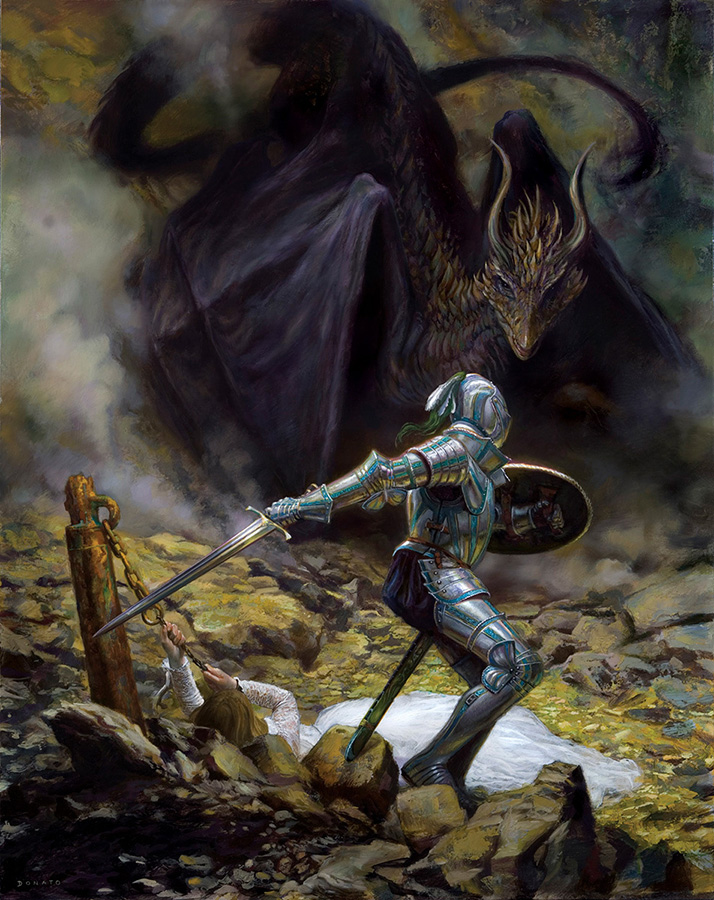
Enchanted: A History of Fantasy Illustration explores fantasy archetypes from the Middle Ages to today. The exhibition will present the immutable concepts of mythology, fairy tales, fables, good versus evil, and heroes and villains through paintings, etchings, drawings, and digital art created by artists from long ago to illustrators working today.
The exhibition Enchanted: A History of Fantasy Illustration is organized by the Norman Rockwell Museum in Stockbridge, MA, and will be on view here from June 12 through October 31, 2021.


